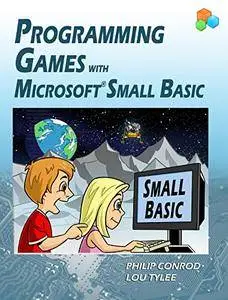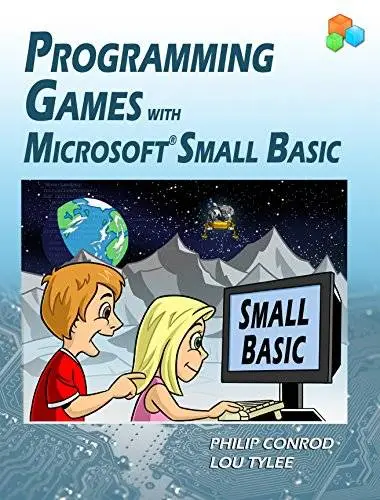Programming Games with Microsoft Small Basic by Philip Conrod
English | 20 Apr. 2017 | ASIN: B071CNCY1C | 702 Pages | AZW3 | 18.19 MB
English | 20 Apr. 2017 | ASIN: B071CNCY1C | 702 Pages | AZW3 | 18.19 MB
PROGRAMMING GAMES WITH MICROSOFT SMALL BASIC teaches Small Basic programming concepts while providing detailed step-by-step instructions for building many fun games. The tutorial is appropriate for kids, teens and adults. The games built are non-violent and teach logical thinking skills. To grasp the concepts presented in PROGRAMMING GAMES WITH MICROSOFT SMALL BASIC, you should possess a working knowledge of Windows and have had some exposure to Small Basic programming (or some other programming language). We offer a beginning programming tutorial (BEGINNING MICROSOFT SMALL BASIC) that would help you gain this needed exposure.
PROGRAMMING GAMES WITH MICROSOFT SMALL BASIC explains (in simple, easy-to-follow terms) how to build a Small Basic game program. Users learn about program design, using Small Basic objects (including button controls), many elements of the Small Basic language, and how to debug and share finished programs. Game skills learned include handling multiple players, scoring, graphics, animation, and sounds. The game programs built include, in increasing complexity: • Safecracker - Decipher a secret combination using clues from the computer.
• Tic Tac Toe - The classic game.
• Match Game - Find matching pairs of hidden photos - use your own photos!
• Pizza Delivery - A business simulation where you manage a small pizza shop for a night.
• Moon Landing - Land a lunar module on the surface of the moon.
• Leap Frog - A fun arcade game where you get a frog through traffic and across a raging river.
The book includes over 650 pages of self-study notes. No previous programming experience is necessary, but familiarity with doing common tasks using a computer operating system (simple editing, file maintenance, understanding directory structures, working on the Internet) is expected. The course requires Microsoft Windows and the free Microsoft Small Basic 1.0 development environment. The Small Basic source code and all needed multimedia files are available for download from the publisher's website (www.KidwareSoftware.com) after you register this book.



